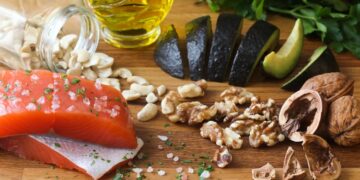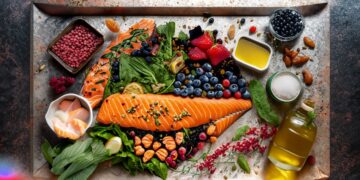Add these four foods to your shopping cart and boost your next workout too!
Let’s face it; we all know we could be eating healthier and making better food choices, all in the name of maximizing our workout efforts. When it comes to choosing the best foods for your workout, Tristaca Curley, a registered dietitian based in Vancouver, B.C., recommends consulting a sports dietitian. “We keep up-to-date on the latest scientific studies on sports nutrition and can help develop a plan based on your body composition and sport performance goals,” she says. So we asked the pro and scoured online studies to give you a solid nutritional foundation to start from.
Milk’s Got It
Judging by the packed shelves loaded with sports recovery drinks you would think selecting the best one requires a degree in nutritional sciences. A recent analysis published in the European Journal of Clinical Nutrition found chocolate milk may be as good as sports beverages in promoting muscle recovery. “Chocolate milk actually fits the ideal ratio that we want to see in a recovery food, which is approximately three grams of carbohydrates for every gram of protein,” says Curley. “This ratio optimizes glycogen replenishment as well as amino acid absorption.” So grabbing a carton of chocolate milk after your next killer CrossFit class may be just what does your body good.
So Easy it’s Nuts!
For an on-the-go snack before your next workout, it doesn’t get much easier than nuts. Along with containing a healthy amount of protein, tree nuts also contain anti-inflammatory improve your recovery time. For endurance athletes, almonds in particular have been found to contain nutrients that may help improve oxygen consumption. In addition, tree nuts may also help stave off cardiovascular-related conditions. In a study of more than 200,000 people published in the Journal of the American College of Cardiology, five or more servings of nuts per week were shown istock.com/Devonyu; sagarmanis; Robert Ingelhart; UmbertoPantalone to have lowered the risk of both cardiovascular disease and heart disease. While further research is required, sticking with about a 20-gram serving of raw nuts as a pre-workout snack also offers a healthy amount of protein and healthy fats, the combination of which will help fuel your workout.
Just Beet It
 Looking for a pre-workout beverage to power your next HIIT workout session? As it turns out, beet juice contains high levels of inorganic nitrate, a nutrient which may have a positive impact on blood f low and muscle contraction, functions which your body performs during a high-intensity workout. In addition, some studies have shown that a diet supplemented with beet juice may help improve muscle power, which can also benefit your ability to achieve better results in shorter periods of time. While beet juice has an earthy flavor, this root vegetable pairs well with fruits such as fiber-rich apples and strawberries in a fresh-pressed juice or smoothie.
Looking for a pre-workout beverage to power your next HIIT workout session? As it turns out, beet juice contains high levels of inorganic nitrate, a nutrient which may have a positive impact on blood f low and muscle contraction, functions which your body performs during a high-intensity workout. In addition, some studies have shown that a diet supplemented with beet juice may help improve muscle power, which can also benefit your ability to achieve better results in shorter periods of time. While beet juice has an earthy flavor, this root vegetable pairs well with fruits such as fiber-rich apples and strawberries in a fresh-pressed juice or smoothie.
To Wine or Not to Wine?
While you don’t want to undo the benefits of all your training by overindulging in alcohol, you may want to make a glass of red wine your go-to the next time you do. Red grapes are an excellent source of resveratrol, which offers multiple benefits including reducing inflammation and giving your metabolism a boost. But eating red grapes may not necessarily offer the same health benefits because the skin of the grapes contains resveratrol and in the process of making wine, it’s the skin of the grapes that are fermented, resulting in more resveratrol.
Don’t Buy the Hype
 Current studies show this once healthy oil may be better on your body than in it.
Current studies show this once healthy oil may be better on your body than in it.
According to registered dietitian Tristaca Curley, “coconut oil can be used for flavoring food just like
other oils, but it isn’t the superfood it is sometimes hailed as.” When it comes down to it, the saturated fat in coconut oil is the culprit, nixing it of anti-inflammatory rewards. That said, we all need fats to keep our metabolism humming and satiate our appetite. Choose ones including olive, camelina, fish and, avocado oil, all of which can reduce inflammation. . .
















